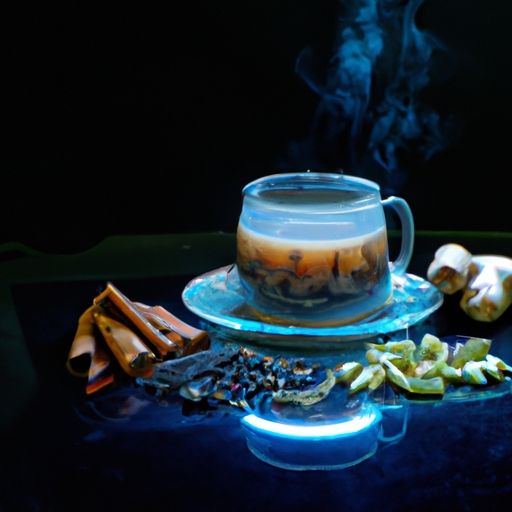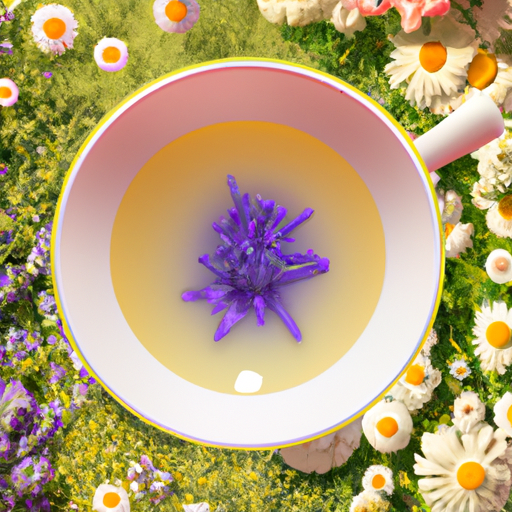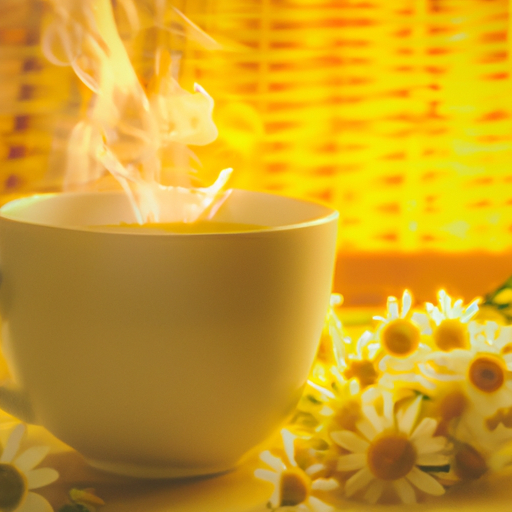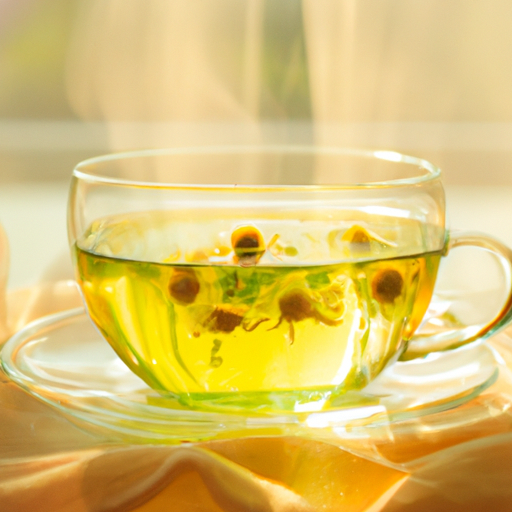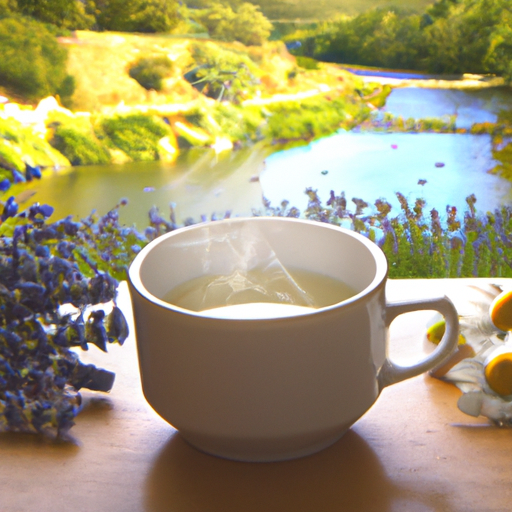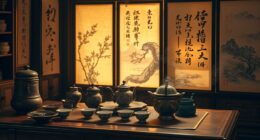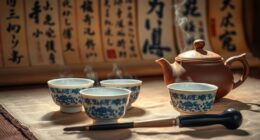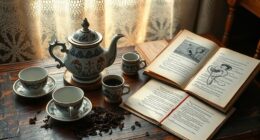Are you bored with the usual tea choices? Want to add some excitement to your daily tea time? You’re in luck, as I have a special and rejuvenating recipe just for you.
Prepare yourself for a sensational experience as I guide you through the art of crafting your very own herbal tea blend with a twist.
Imagine a warm, comforting cup of tea that not only tantalizes your taste buds but also nourishes your body and soul. Picture the aromatic fusion of cinnamon, carob, ginger, cardamom, cloves, and a hint of black pepper dancing on your tongue. This holistic concoction is not only delicious but also packed with natural goodness.
In this article, I will show you how to gather these incredible ingredients and create a harmonious blend that will awaken your senses. With a few simple steps, you’ll brew a fragrant and soothing herbal tea that will transport you to a state of pure bliss.
So, let’s embark on this journey together and unleash the power of nature’s bounty in your very own cup of homemade herbal tea.
Get ready to sip, savor, and experience the magic!
Key Takeaways
- Herbal tea blends can be made using a combination of cinnamon, carob, ginger, cardamom, cloves, and black pepper for a unique and invigorating flavor.
- Accurate measurement of ingredients is important to achieve the desired flavor in herbal tea blends.
- Different brewing techniques such as steeping, simmering, cold infusion, steam, and decoction can be used to prepare herbal tea.
- Herbal teas offer a range of health benefits, including regulating blood sugar levels, aiding digestion, reducing inflammation, and providing antioxidants and antimicrobial properties.
Gather the Ingredients
Now that you’re ready to embark on your herbal tea adventure, it’s time to gather the star ingredients that’ll infuse your senses with warmth and exotic flavors.
When it comes to making herbal tea, you have the choice of using either fresh or dried ingredients. Fresh ingredients are vibrant, aromatic, and bursting with flavor. They provide a more intense taste and aroma to your tea. On the other hand, dried ingredients have a longer shelf life and are easier to store. They still retain their beneficial properties, making them a convenient option.
Let’s dive into the benefits of each star ingredient. Cinnamon, known for its sweet and warming flavor, adds a delightful touch to your tea. Not only does it enhance the taste, but it also has antioxidant and anti-inflammatory properties.
Carob, with its rich and chocolatey flavor, brings a comforting element to your tea. It’s packed with vitamins and minerals, promoting good digestion and reducing cholesterol levels.
Ginger, with its spicy kick, not only adds depth to your tea but also aids digestion and helps alleviate nausea.
Cardamom, with its unique and fragrant taste, has antimicrobial properties and aids in digestion.
Cloves, with their warm and aromatic flavor, are known for their anti-inflammatory and antibacterial properties.
Finally, a touch of black pepper adds a subtle heat and enhances the absorption of the tea’s benefits.
Now that you’ve gathered these incredible ingredients, let’s move on to preparing your tea blend seamlessly.
Prepare Your Tea Blend
To prepare my herbal tea blend, the first thing I do is measure out the ingredients. I carefully scoop the cinnamon, carob, ginger, cardamom, cloves, and black pepper into separate bowls, making sure to get the right amount of each.
Once all the ingredients are measured, I then mix them together in a large bowl, ensuring that they’re evenly combined.
By taking the time to measure and mix the ingredients, I can create a well-balanced and flavorful tea blend that’ll provide me with all the natural benefits these herbs have to offer.
Measure the Ingredients
First, gather your ingredients and measure out the perfect blend of cinnamon, carob, ginger, cardamom, cloves, and a hint of black pepper for a harmonious herbal tea. Measuring accuracy is crucial to achieve the desired flavor and benefits of each ingredient. It is important to adjust the amounts according to your personal taste preferences. When measuring, make sure to use a reliable kitchen scale or measuring spoons for precise quantities. To help you visualize the perfect blend, here is a table showcasing the ideal ratios of each ingredient:
| Ingredient | Amount |
|---|---|
| Cinnamon | 1 tsp |
| Carob | 1 tsp |
| Ginger | 1 tsp |
| Cardamom | 1 tsp |
| Cloves | 1/2 tsp |
| Black Pepper | 1/4 tsp |
Once the ingredients are accurately measured, it’s time to mix them together, creating a delightful and aromatic combination.
Mix the Ingredients Together
Mix all the measured ingredients together to create a tantalizing blend of flavors that will leave your taste buds craving more. This herbal tea is infused with cinnamon, carob, ginger, cardamom, cloves, and black pepper. Not only does it delight your senses, but it also offers a wide range of health benefits. Cinnamon, known for its anti-inflammatory properties, can help regulate blood sugar levels. Carob provides a rich source of antioxidants, while ginger aids digestion and reduces nausea. Cardamom promotes respiratory health, and cloves have antimicrobial properties. Black pepper enhances the absorption of nutrients in the body. Use this recipe as a starting point and feel free to experiment with different spices to create your own unique herbal tea blends.
Now that you have mixed the ingredients, let’s move on to brewing your herbal tea, where the flavors will truly come alive.
Brew Your Herbal Tea
Now, let’s get brewing your delicious herbal tea with cinnamon, carob, ginger, cardamom, cloves, and black pepper. Brewing herbal tea is a beautiful art that allows us to extract the wonderful flavors and health benefits from these natural ingredients.
There are different brewing techniques you can try, each offering a unique taste and experience.
-
Steep and Sip: Allow the tea to steep in hot water for 5-10 minutes, then sip slowly, savoring each sip and feeling the warmth spread through your body.
-
Simmer and Relax: Gently simmer the tea on low heat for 15-20 minutes, allowing the flavors to meld together. Close your eyes, take a deep breath, and let the soothing aroma calm your mind.
-
Cold Infusion and Refresh: Place the tea in cold water overnight, letting it infuse slowly. Sip it chilled the next day, refreshing your senses and invigorating your body.
-
Steam and Revitalize: Pour hot water over the tea blend in a bowl, then cover your head with a towel and inhale the steam deeply. Feel the rejuvenating power of the herbs as they cleanse and revitalize your respiratory system.
-
Decoction and Nourish: Boil the tea with water for 20-30 minutes, allowing the herbs to release their potent properties. Sip the nourishing brew, knowing that you’re giving your body a natural boost.
Brewing herbal tea not only creates a delightful beverage, but it also offers a myriad of health benefits. The combination of cinnamon, carob, ginger, cardamom, cloves, and black pepper provides anti-inflammatory properties, aids digestion, boosts immune function, and promotes overall well-being.
So, now that your tea is brewed, let’s move on to the next step of straining and serving this delightful elixir.
Strain and Serve
Once the herbal tea has steeped or simmered to perfection, it’s time to strain the fragrant liquid and serve it in your favorite cup. Straining the tea is an important step as it removes any solids or herbs that may have been left behind during the brewing process.
To strain the tea, simply place a fine mesh strainer or cheesecloth over your cup or teapot and carefully pour the liquid through it. This will ensure a smooth and enjoyable drinking experience.
When serving herbal tea, it’s important to consider the temperature and presentation. Herbal tea is best served hot, as it allows the flavors and aromas to fully develop. Pour the strained tea into a preheated cup or teapot to maintain its warmth. It’s also a nice touch to garnish your tea with a slice of lemon or a sprig of fresh herbs, such as mint or lavender, to enhance the visual appeal and add a subtle hint of flavor.
As we move on to the next step of adding sweeteners or flavorings (optional), it’s important to remember that herbal teas are often enjoyed on their own, without the need for additional ingredients. However, if desired, there are a variety of natural sweeteners, such as honey or stevia, that can complement the flavors of your herbal tea.
Let’s explore this step further.
Add Sweeteners or Flavorings (Optional)
To enhance the flavors of your herbal tea, you can optionally add natural sweeteners or flavorings. Using natural sweeteners in your herbal tea not only adds a touch of sweetness, but also brings along a host of benefits. Natural sweeteners like honey, maple syrup, or stevia are rich in antioxidants and can provide a healthier alternative to refined sugars. They can also contribute to a balanced glycemic response, making them suitable for those watching their blood sugar levels.
Experimenting with different flavor combinations can take your herbal tea experience to the next level. For a warming and comforting twist, try adding a dash of cinnamon or a sprinkle of cardamom. If you prefer a hint of richness, a touch of carob can do the trick. To add a little zing, ginger and cloves can provide a spicy kick. Don’t be afraid to get creative and mix and match flavors to find your perfect combination.
With your herbal tea brewed to perfection, it’s time to cozy up and enjoy your homemade creation, savoring each sip as it nourishes your body and soul.
Enjoy Your Homemade Herbal Tea
Indulge in the satisfying experience of enjoying your very own homemade herbal tea, as each sip nourishes your body and soothes your soul.
Herbal tea is not only a delightful beverage, but it also offers a range of health benefits. The combination of cinnamon, carob, ginger, cardamom, cloves, and black pepper creates a flavorful blend that’s both invigorating and comforting.
Herbal tea has been used for centuries in various cultures for its medicinal properties. For example, cinnamon helps regulate blood sugar levels, while ginger aids in digestion and reduces inflammation. Cardamom, cloves, and black pepper possess antioxidant and antimicrobial properties, which can support a healthy immune system.
There are also different types of herbal tea that you can explore. Chamomile tea, for instance, promotes relaxation and sleep, while peppermint tea can help relieve digestive issues. Each herbal tea has its own unique benefits, so feel free to experiment and find the ones that resonate with you.
Now that you’ve created your own herbal tea blend and learned about its benefits, it’s time to explore other herbal tea combinations. Let’s delve into the world of herbal tea and discover new flavors and health-promoting properties.
Explore Other Herbal Tea Combinations
After enjoying my homemade herbal tea, I was inspired to explore other herbal tea combinations. There are so many different flavors to choose from, and I wanted to experience the benefits of herbal tea for my health.
-
Minty Fresh: Combining peppermint, spearmint, and chamomile creates a refreshing and soothing blend. It aids digestion and helps relieve stress and anxiety.
-
Citrus Burst: Mixing lemon verbena, orange peel, and hibiscus creates a tangy and uplifting tea. It’s rich in antioxidants and vitamin C, boosting immunity and promoting healthy skin.
-
Floral Delight: Blending rose petals, lavender, and jasmine creates a fragrant and calming tea. It promotes relaxation, reduces inflammation, and supports a restful sleep.
-
Spiced Infusion: Mixing cinnamon, ginger, and cloves creates a warm and comforting tea. It aids digestion, boosts metabolism, and reduces inflammation.
These herbal tea combinations not only offer a variety of flavors but also provide numerous health benefits. From soothing the mind to boosting immunity, herbal teas are a natural way to enhance well-being. I can’t wait to try these new combinations and experience the holistic benefits they offer.
Frequently Asked Questions
What are the health benefits of cinnamon, carob, ginger, cardamom, cloves, and black pepper?
Cinnamon, carob, ginger, cardamom, cloves, and black pepper have various health benefits. They have been used in culinary and traditional medicine. These natural ingredients offer holistic remedies, supported by evidence, promoting overall well-being.
Can I use ground spices instead of whole spices for making herbal tea?
Yes, ground spices can be used for making herbal tea. They infuse flavors faster and are easier to strain. To store your homemade herbal tea blend, keep it in an airtight container in a cool, dry place.
How long can I store the homemade herbal tea blend?
Sure thing! When it comes to storing my homemade herbal tea blend, I make sure to keep it in an airtight container in a cool, dark place. Factors like moisture, sunlight, and temperature can affect its shelf life.
Are there any potential side effects of consuming herbal tea made with these ingredients?
Potential risks and precautions should be considered when consuming herbal tea made with cinnamon, carob, ginger, cardamom, cloves, and black pepper. It is important to be aware of any allergies, interactions with medications, and potential digestive issues that may arise.
Can I use different quantities of each ingredient to customize the flavor of the herbal tea blend?
Sure, you can definitely experiment with quantities to customize the flavor of your herbal tea blend. It’s all about finding the perfect balance that suits your taste. Enjoy the process and let your creativity flow!
Conclusion
In conclusion, making your own herbal tea can be a wonderfully holistic and natural way to enjoy a warm and soothing beverage. By using a blend of cinnamon, carob, ginger, cardamom, cloves, and black pepper, you can create a delightful concoction that not only tastes delicious but also provides numerous health benefits.
Picture this – as you sip on your homemade tea, imagine your body being enveloped in a cozy blanket of wellness, as the spices work their magic to boost your immune system and soothe your senses. So go ahead, take a moment to indulge in the comforting embrace of homemade herbal tea.

